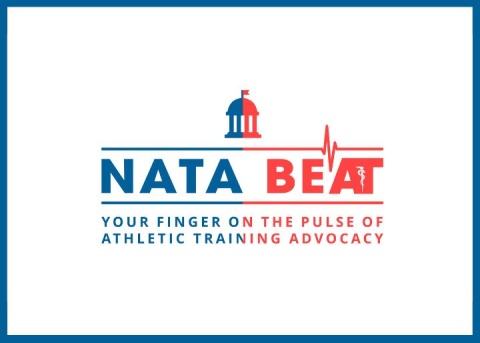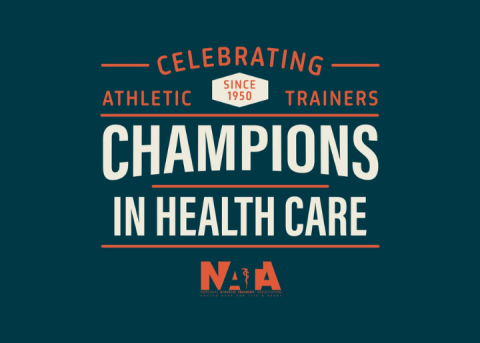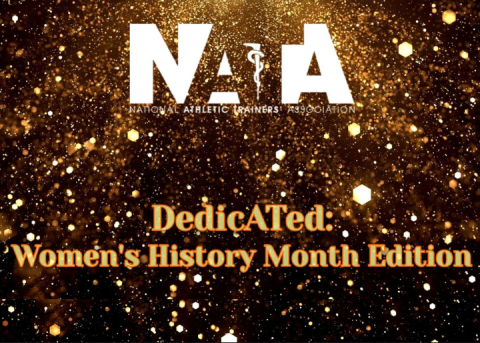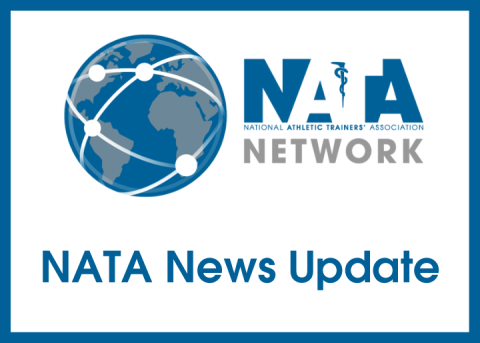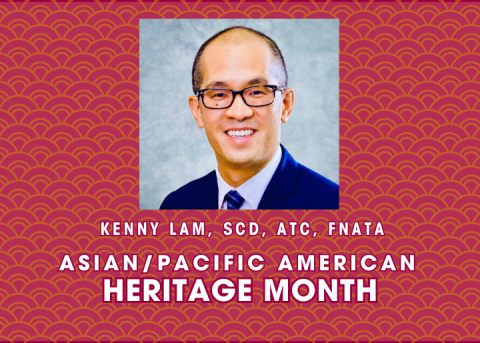
In honor of Asian/Pacific American Heritage Month in May, NATA Now is highlighting some of our Asian American and Pacific Islander leaders at the state, district and national levels.
Since high school, athletic training has been a passion for NATA Research & Education Foundation Research Committee and Athletic Training Research Agenda Committee member Kenny Lam, ScD, ATC, FNATA.
Driven by his love for helping people achieve their goals, Lam said athletic training has been his avenue do so.
“As a high school student, my interests in sports and medicine inspired me to pursue a career in athletic training,” he said. “Athletic training has provided me with many opportunities to help others as a clinician, educator and researcher.”
As a professor of clinical research at A.T. Still University, Lam now applies his people-development skills to growing the next generation of athletic trainers. As a leader at the state, district and national levels, he also contributes to the advancement of AT research and education.
Learn more about his journey in higher education as well as his perspective on representation in leadership.
What was your first volunteer position within the athletic training profession and why did you get involved?
My first athletic training volunteer experience was as a medical volunteer at the finish line at the Boston Marathon. I was an athletic training student at the time, and it was great to play a small role in providing medical assistance to thousands of people who had worked so hard to achieve their major goal.
My first professional committee experience was serving as the inaugural chair of the Communications Committee for the Arizona Athletic Trainers’ Association. I sought out this opportunity to give back to the athletic trainers in Arizona and serve our profession as a whole by improving communication strategies for important stakeholders such as health care professionals, media outlets and state legislators.
Tell us about your current position as a member of the NATA Research & Education Foundation Research Committee and Athletic Training Research Agenda Committee and what you hope to accomplish in this role.
As a member of the NATA Foundation’s Athletic Training Research Agenda Committee and an editorial board member of the Journal of Athletic Training and Journal of Sport Rehabilitation, I am very interested in supporting, advancing and advocating for athletic training research. The NATA Foundation Research Committee and Athletic Training Research Agenda Committee have allowed me to continue to pursue these aims as it serves to identify promising educational and clinical investigations through its grants program and recognize outstanding athletic training scholars through its awards program.
Why is representation in leadership important and how does it impact the profession?
Representation in leadership is crucial for many reasons. For instance, having a diverse leadership team can improve decision-making, enhance problem-solving and increase community engagement. More personally, I believe leaders from underrepresented groups can act as role models and mentors for other athletic trainers from similar backgrounds, providing guidance and inspiration for the next generation of leaders. This mentorship is crucial for the professional growth of individuals as well as the athletic training profession.
How has volunteering helped you grow personally and professionally?
Serving on committees at the state, district and national levels has been such a rewarding experience. These opportunities have not only allowed me to serve our profession but also interact with many of our athletic training colleagues who I wouldn’t have met otherwise. To hear the great and interesting things our peers are doing is inspiring and makes me excited for the future of our profession.
What’s your fondest memory of serving so far?
My fondest memories are from my time as chair of the Free Communications Committee for the Rocky Mountain Athletic Trainers’ Association. During my tenure, I oversaw the call for, approval of and programming process for more than 140 scientific abstracts. Many of these scientific abstracts were authored by athletic training students, clinicians and young investigators who were presenting at their first professional conference. It was very rewarding for me to see how proud and excited they were to share their research at our annual meeting.
What advice do you have for other athletic trainers who want to give back to the profession?
My advice for other athletic trainers would be to get involved in any capacity that you can. Sometimes, it can feel intimidating, but the athletic training profession will be better off if we can get more of our peers involved in professional service. It will no doubt help advance our profession, but also provide an opportunity for professional development and growth for the athletic trainer.

